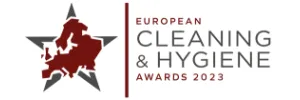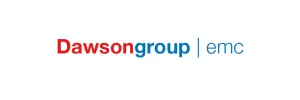News & Insights
Read the latest news from us and our clients across the globe

Posted on 8 August 2016 by adtrak.admin
Keeping food waste in the food chain – smarter resource generation
Karen Markey from Mitie’s Waste business discusses why we shouldn’t write-off the viable potential of food waste as a revenue stream by keeping it in the food chain.

According to UNEP (United Nations Environment Programme) roughly one third of the food produced in the world for human consumption every year, that’s approximately 1.3 billion tonnes, is lost or wasted. Statistics by WRAP* state that commercially, food and drink manufacturers generate close to five million tonnes of food waste annually Thankfully, this waste is avoidable as surplus food wastecan be converted into a secondary product by staying in the food chain to retain some of its value. However, this isn’t always the course of action that manufacturers take.
There is encouragement at hand with the advent of the Courtauld Agreement, and their high profile signatories. It’s a collaborative commitment to cut the resource needed to provide our food and drink by one-fifth and make it more sustainable by 2025. The food industry signatories to Courtauld have agreed to do the following:
- Create lower impact products
- Create products more efficiently
- Help get more value from purchased food and drink
- Optimise use of remaining waste and surplus food.
The Courtauld Agreement also highlights an urgency to rectify the practices that result in so much food waste across production and service industries.
The hidden costs of food waste
Surprisingly in this day and age, it seems that many food manufacturers and retailers aren’t aware of the options available to them when it comes to managing food waste, and turning it into a potential resource. The first step in this process is identifying the true supply chain value of raw materials acquired for food production.
This includes the energy spent for processing, water usage, land management and transport costs. These are all reflected in the purchase price. Therefore, when excess raw materials are wasted, it represents a much bigger cost in expenditure, not to mention the environmental impact.
With this in mind, the production costs from a sustainable and economic angle suggest it’s more logical to keep the waste raw material in the food chain where it can be re-utilised. Even though material can be re-used as fuel in the energy recovery process, it loses its more obvious value found in the food chain.
Yes, you can recycle food – within the food chain.
Recycling doesn’t just apply to packaging. You can also safely exploit foodstuffs considered unsuitable for human consumption – keeping it in the food chain.
Companies are beginning to realise that waste is a resource with hidden value just waiting to be unlocked. For example, useful surplus and waste foodstuffs are often used in animal feed; this includes bread, biscuits, cakes, chocolate, breakfast cereals and even crisps (so long as you can resist the temptation!). Such starch-rich foods can be reclaimed from retail organisations or food manufacturers if they are left over from production mishaps, surplus ordering and exceeded sell-by dates. Surplus fruit used in jam or juice production can be sent to feed livestock or pigs. Under these circumstances they cannot be reused for human consumption yet they still retain nutrient value, which is acceptable for animal feed use.
However, we have seen innovation taking food waste recycling to another level within the food chain. There is the recycling of surplus bread which is made into beer. By-products from beer production can then be used to make yeast rich products like edible extracts and spreads. These are shining examples of closed loop practice that keep food waste in the food chain, transforming waste into resource fit for human consumption.
Schemes such as ‘Fairshare’ and ’Neighbourly’ are also gaining momentum. These schemes collect packaged foods that are close to ‘sell by dates’ from major retailers to be distributed amongst various food charities.
Other food recycling options
There are situations where such recycling is not feasible. In which case there is the better known composting option where food waste is still segregated but sent off for energy recovery. For much smaller businesses, there is an option to do your composting on site, and reuse the materials for kitchen gardens or even donating them to community garden projects. While the composting and energy recovery options are much better known, you should note that under the principles of the waste hierarchy, where possible, valuable nutrients need to be retained in the food chain.
Consider anaerobic digestion (AD) of food waste; this is a method of energy recovery that creates methane. This then has the potential to be used as vehicle fuel, or even biogas which can be burned to produce heat and electricity. The resulting mulch or ‘digestate’ can be used as a fertiliser. Even though the end results of AD are productive, it should only be considered when all earlier opportunities in the waste hierarchy, including re-use and recycling have been exhausted. This is particularly applicable for large scale commercial production where the potential for recouping value in the food chain is high.
The law now supports food recycling
Many manufacturers tend to take the well-trodden path of composting and reclaimed bio-energy. There may be some trepidation about the legal responsibilities of being a ‘feed business operator’, so they don’t consider recycling within the food chain.
However, the launch of the EU’s Circular Economy Package introduces measures to enable UK and European producers to become more efficient with their resources, including food waste recycling.
The 2030 Sustainable Development Goals aim to halve per capita, food waste at the retail and consumer level, as well as reducing food losses along production and supply chains. The EU and its Member States are committed to meeting this target.
An important part of the Circular Economy Package is the Food Waste Action Plan, which sets out the European Union’s approach to defining and better managing food waste in accordance with the waste hierarchy (reduce – re-use – recycle – dispose). It helps to remove legal uncertainties around the safe use of food wastage in the feed chain and encourage a bigger movement towards circular economy practice in the use of former foodstuffs in animal feed (and even human consumables).
Both of these approaches will help Europe halve its food waste whilst keeping food in the food chain. Reducing food waste makes good business sense, and you can be a part of a growing movement on how to be smarter when it comes to treat your food waste. Yes – you can recycle your food and harness its true value in the food chain as a resource – not waste.
*WRAP – Waste and Resources Action Programme
Published in Shopping Centre Magazine – August 2016
Experts in Public Relations Services & Communications Management
Our ServicesGenuine industry specialists in cleaning and hygiene, environmental and recycling, and facilities management
Our Sectors












